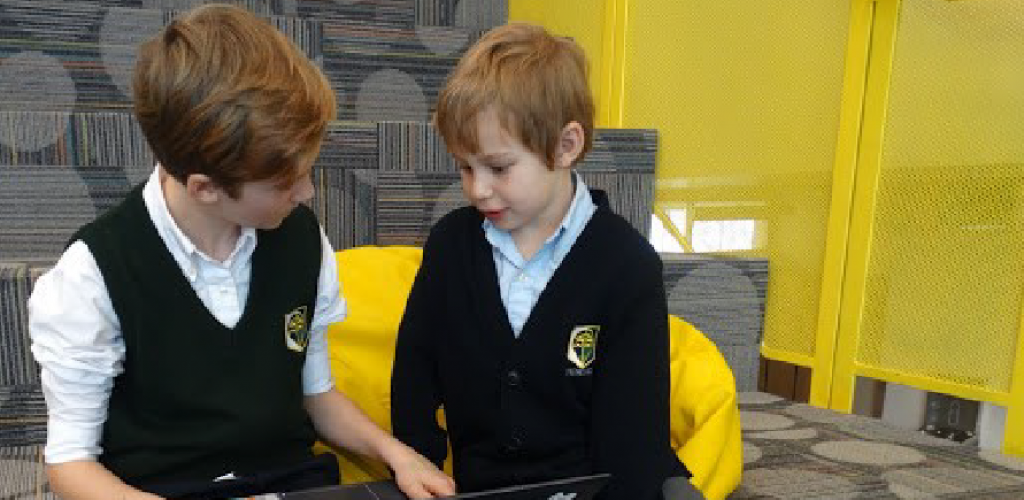 Earlier this term, Grade 8 students were given a fictional client with identified needs (e.g. lack of physical accessibility, poor time management, problems with studying) and were then tasked with designing a programmable microcomputer to help meet their client’s needs and to create a prototype with craft materials. The Grade 8s had the opportunity to test their devices with Ms. Adair’s Grade 2 class, where the Grade 2s provided feedback regarding their assistive technology device, including how well their code performed, how easy the device was to use and general advice on how the user experience could be improved. The finished products designed by the Grade 8s included a wearable fit bit, handheld gaming devices, virtual pets, learning tools and counting devices.
Earlier this term, Grade 8 students were given a fictional client with identified needs (e.g. lack of physical accessibility, poor time management, problems with studying) and were then tasked with designing a programmable microcomputer to help meet their client’s needs and to create a prototype with craft materials. The Grade 8s had the opportunity to test their devices with Ms. Adair’s Grade 2 class, where the Grade 2s provided feedback regarding their assistive technology device, including how well their code performed, how easy the device was to use and general advice on how the user experience could be improved. The finished products designed by the Grade 8s included a wearable fit bit, handheld gaming devices, virtual pets, learning tools and counting devices.
The Grade 2s were enthusiastic participants and offered lots of valuable feedback to help the designers improve their products. In interacting with the Grade 8 students and seeing the fun projects that they get to experience and explore, Grade 2s were also inspired to embark on a small microbit programming project of their own!
It is predicted that 20 years from now, many of the available jobs do not yet exist today, so students must learn to be resilient, flexible, and open to creative problem-solving to be successful in a rapidly changing economy and world. Studies show that STEAM learning develops vital transferable skills and learning across subjects, through experimentation, trial and error and creativity. Projects like these enable students to work collaboratively, across disciplines, giving them essential skills for the future and jobs that have yet to exist.

